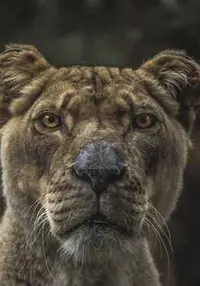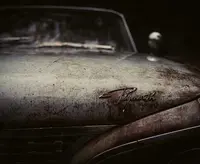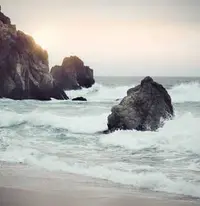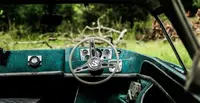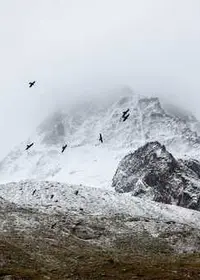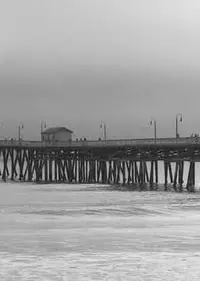Grad-CAM: Visual Explanations from Deep Networks via Gradient-based Localization
A study conducted in the UK from 2009 to 2010 by leading scientists explored neonatal resuscitation practices in various neonatal units, aiming to assess adherence to international guidelines and identify differences between tertiary and non-tertiary care providers...
Read on arXiv Lorem ipsum dolor sit amet, consectetur adipiscing elit. Sed do eiusmod tempor incididunt ut labore et dolore magna aliqua. Ut enim ad minim veniam, quis nostrud exercitation ullamco laboris nisi ut aliquip ex ea commodo consequat.
Lorem ipsum dolor sit amet, consectetur adipiscing elit. Sed do eiusmod tempor incididunt ut labore et dolore magna aliqua. Ut enim ad minim veniam, quis nostrud exercitation ullamco laboris nisi ut aliquip ex ea commodo consequat.
One Sentence Abstract
This abstract introduces Grad-CAM, a technique that generates visual explanations for decisions made by Convolutional Neural Network (CNN)-based models, which is applicable to various CNN model-families including VGG, captioning, and visual question answering, and improves visualization, generalization, and user trust.
Simplified Abstract
This research introduces a new technique called Gradient-weighted Class Activation Mapping (Grad-CAM) to make decisions from Convolutional Neural Network (CNN) models clearer. Grad-CAM helps us understand which parts of an image are most important for making a specific decision, like identifying a 'dog'. This method works for a variety of CNN models, such as those used for captioning (describing images) or answering visual questions.
The researchers also created a high-resolution version called Guided Grad-CAM, which they tested on different types of models. They found that this technique can help us understand why a model made certain predictions, even if they seemed wrong. This method even works when the images are altered in sneaky ways.
The researchers even showed that this method can help people understand how well a model is working, even without any special training. They did this by conducting a study where people looked at the explanations provided by Grad-CAM and then decided which model was better.
This research provides a valuable tool that can help us use complex models more effectively and make decisions based on accurate information. Their work is available online, along with a demonstration video and a website where anyone can try it out.
Study Fields
Main fields:
- Computer vision
- Convolutional Neural Networks (CNNs)
- Explanatory methods for decisions
Subfields:
- Visual explanations
- Gradient-weighted Class Activation Mapping (Grad-CAM)
- High-resolution class-discriminative visualization (Guided Grad-CAM)
- Image classification
- Image captioning
- Visual question answering (VQA)
- Robustness to adversarial perturbations
- Model generalization
- Important neurons identification
- Textual explanations
- Human studies on trust in predictions
- Cloud-based demos
Study Objectives
- Develop a technique for producing 'visual explanations' for decisions made by Convolutional Neural Network (CNN)-based models
- Create Gradient-weighted Class Activation Mapping (Grad-CAM) approach that uses gradients of any target concept to produce a coarse localization map highlighting important regions in the image for predicting the concept
- Demonstrate that Grad-CAM is applicable to a wide variety of CNN model-families, including:
- CNNs with fully-connected layers (e.g., VGG)
- CNNs used for structured outputs (e.g., captioning)
- CNNs used in tasks with multi-modal inputs (e.g., visual question answering) or reinforcement learning, without architectural changes or re-training
- Combine Grad-CAM with existing fine-grained visualizations to create a high-resolution class-discriminative visualization called Guided Grad-CAM
- Apply Guided Grad-CAM to image classification, image captioning, and visual question answering (VQA) models, including ResNet-based architectures
- Evaluate the performance of the visualizations in the context of image classification models, demonstrating that they:
- Provide insights into failure modes of these models
- Outperform previous methods on the ILSVRC-15 weakly-supervised localization task
- Are robust to adversarial perturbations
- Are more faithful to the underlying model
- Help achieve model generalization by identifying dataset bias
- Evaluate the performance of the visualizations for image captioning and VQA models, demonstrating that non-attention-based models can learn to localize discriminative regions of the input image
- Identify important neurons through Grad-CAM and combine them with neuron names (netdissect) to provide textual explanations for model decisions
- Design and conduct human studies to measure if Grad-CAM explanations help users establish appropriate trust in predictions from deep networks
- Show that Grad-CAM helps untrained users successfully discern a 'stronger' deep network from a 'weaker' one even when both make identical predictions
Conclusions
- The authors propose Gradient-weighted Class Activation Mapping (Grad-CAM) as a technique for producing 'visual explanations' for decisions made by CNN-based models, improving transparency and explainability.
- Grad-CAM is applicable to a wide range of CNN models, including those with fully-connected layers, used for structured outputs, multi-modal inputs, or reinforcement learning, and can be applied to various tasks such as image classification, image captioning, and visual question answering.
- Combining Grad-CAM with existing fine-grained visualizations results in Guided Grad-CAM, which is applied to different models, including ResNet-based architectures.
- In the context of image classification models, Grad-CAM visualizations provide insights into failure modes, outperform previous methods in weakly-supervised localization tasks, are robust to adversarial perturbations, are more faithful to the underlying model, help identify dataset bias, and aid in achieving model generalization.
- For image captioning and visual question answering, Grad-CAM visualizations show that non-attention-based models learn to localize discriminative regions of input images.
- The authors devise a way to identify important neurons through Grad-CAM and combine it with neuron names (netdissect) to provide textual explanations for model decisions.
- Human studies conducted by the authors show that Grad-CAM explanations help users establish appropriate trust in predictions from deep networks, allowing untrained users to discern a 'stronger' deep network from a 'weaker' one even when both make identical predictions.
References
- University of AI
Received 20 Oct 2011, Revised 9 Dec 2011, Accepted 5 Jan 2012, Available online 12 Jan 2012.
